This article delves into the strategies essential for optimizing hotel budgets to achieve maximum profitability. By leveraging data-driven insights and effective management practices, it underscores the critical importance of:
These elements are pivotal in enhancing operational efficiency and boosting revenue generation. Ultimately, the article demonstrates how these strategies can lead to significant financial improvements within the hospitality sector.
Harnessing data-driven insights has emerged as a pivotal strategy for hotels seeking to optimize their budgets and enhance profitability. In an increasingly competitive hospitality landscape, where traveler expectations are continually evolving, the effective allocation of resources has never been more critical. How can hotels not only survive but truly thrive in this dynamic environment? This article delves into 14 actionable strategies that leverage data analytics and market trends, empowering hotel owners to refine their financial planning and elevate overall performance.
Harnessing the power of data analytics empowers accommodations to pinpoint trends, accurately forecast demand, and make informed strategic decisions regarding resource allocation. By integrating data into their hotel budgets, establishments can proactively anticipate shifts in occupancy and refine their financial strategies accordingly. This approach not only boosts profitability but also positions establishments to thrive in an increasingly competitive landscape.
Notably, successful implementations of data-informed budgeting, such as the collaboration with Lights On, illustrate that hotels can achieve significant revenue growth by optimizing pricing strategies and enhancing operational efficiency. Hotel owners can adopt specific tactics, including:
Markus Schale, General Manager of Hotel Wailea, highlighted the concrete advantages of data-driven insights in surpassing revenue expectations. As the global travel and tourism market is projected to reach approximately US$1,114 billion by 2029, with an annual growth rate of 3.90% from 2025 to 2029, the importance of data-driven insights in managing hotel budgets becomes increasingly clear, especially with accommodation prices expected to rise in most regions worldwide in 2025.
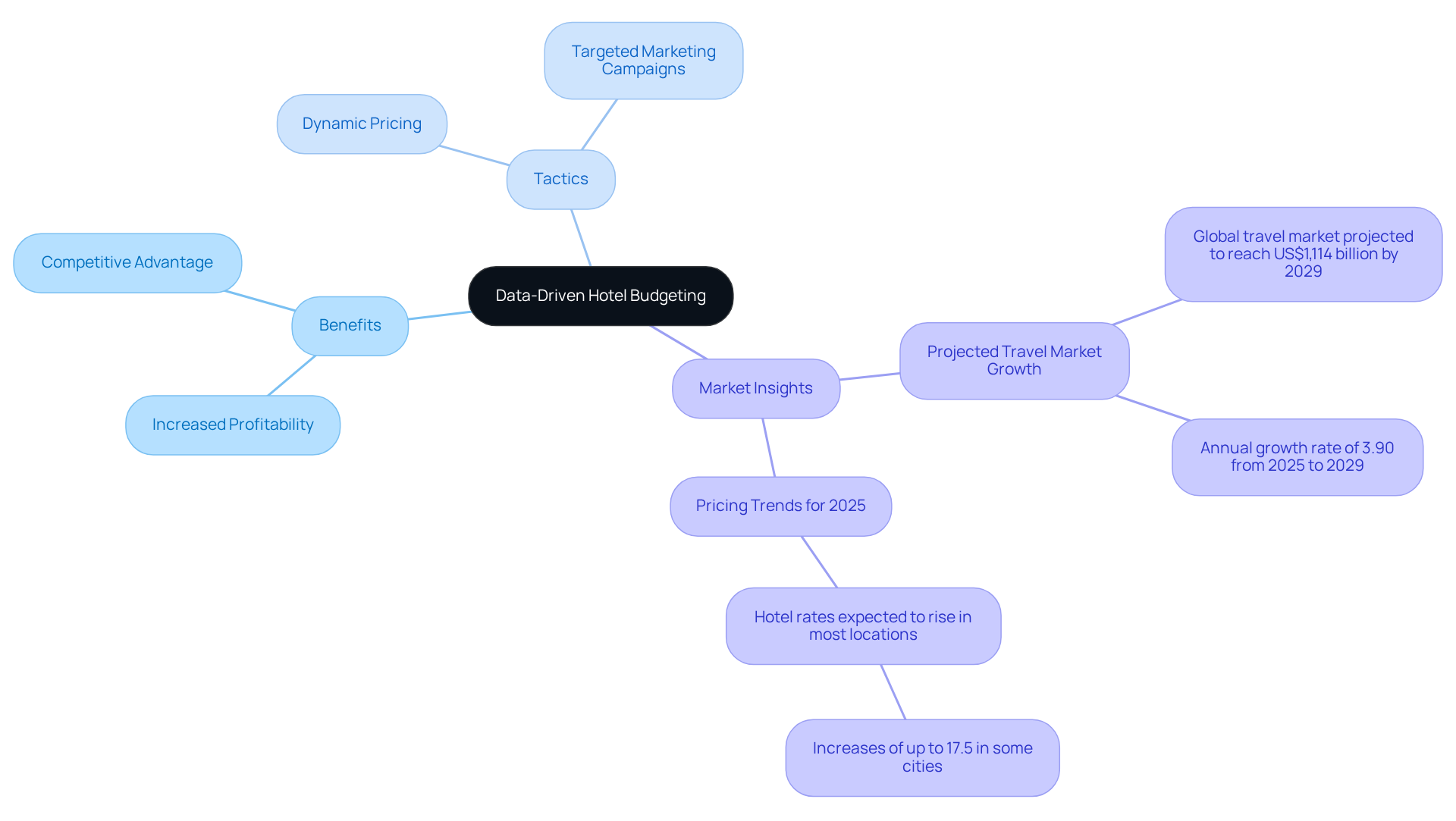
Monitoring demand trends necessitates a comprehensive analysis of historical data to reveal patterns in guest bookings and occupancy rates. By pinpointing peak and trough periods, accommodations can strategically adjust their pricing and marketing efforts. This enables them to capitalize on high-demand seasons while mitigating losses during slower times.
Notably, the first quarter of 2025 exhibited robust growth in group and business travel across the U.S., indicating a significant opportunity for accommodations to enhance their services during these busy periods. Conversely, fluctuations in room demand resemble a roller coaster, underscoring the necessity for a proactive approach to forecasting. Such foresight ensures that budgets align with actual market conditions and remain responsive to the evolving landscape of traveler behavior.
As travelers increasingly prioritize experiences, bolstered by adaptable work arrangements, accommodations must adjust their pricing strategies accordingly to maintain competitiveness and profitability.
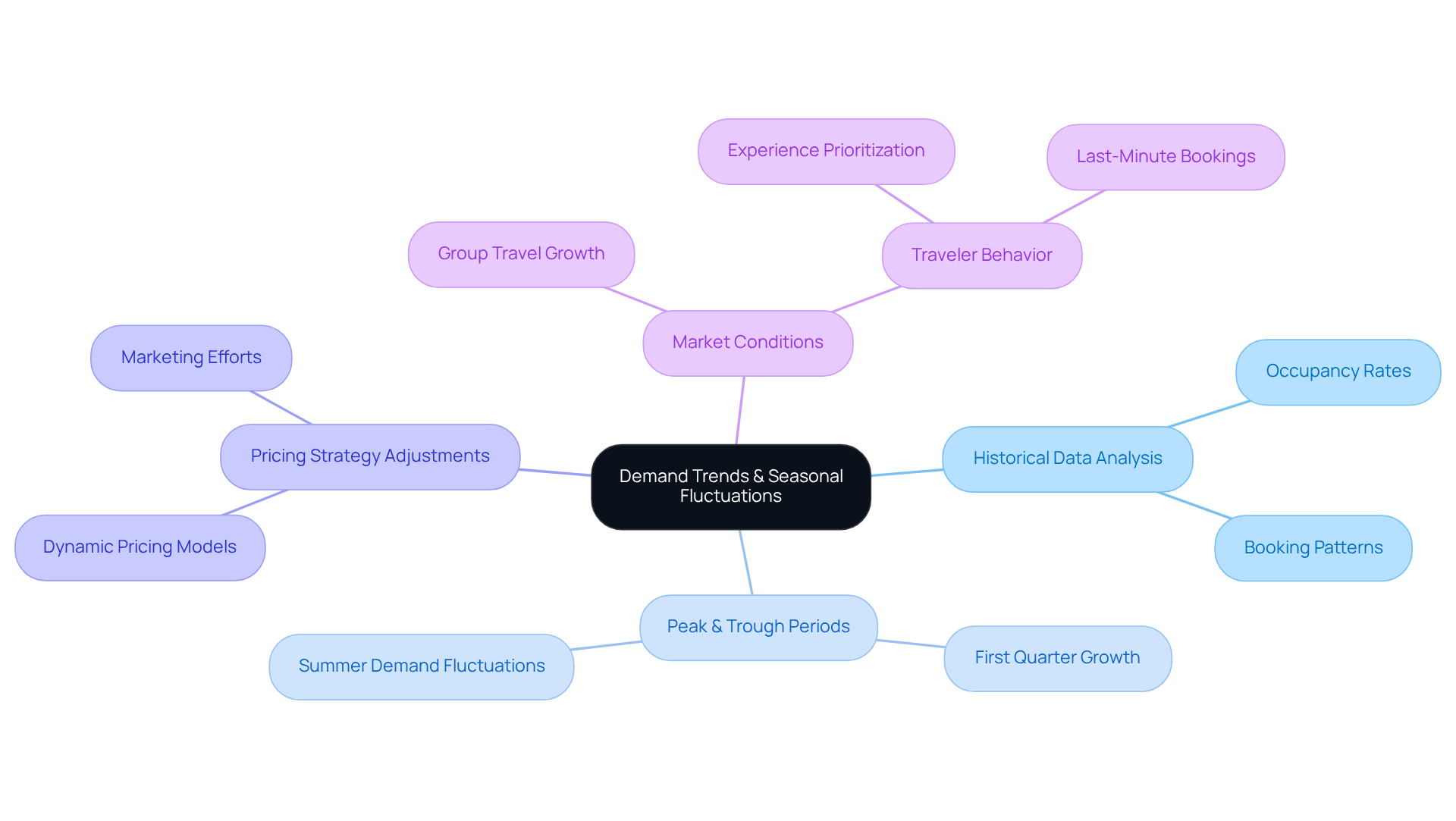
Consistently evaluating year-to-date earnings against prior years is crucial for establishments aiming to identify growth opportunities and areas that require improvement. This analysis not only highlights which services or promotions are driving revenue but also pinpoints those that may warrant reassessment.
For instance, establishments like Veda5 Wellness Retreat and Olive Living have effectively implemented strategies that led to profit increases of 50% and 2X, respectively. By concentrating on high-performing sectors, establishments can allocate resources more efficiently, thereby enhancing overall profitability.
As Sir Richard Branson aptly states, "The key is to set realistic customer expectations and then not to just meet them, but to exceed them — preferably in unexpected and helpful ways."
Understanding and applying these insights, such as focusing on pricing optimization and demand generation, can transform income management practices, ensuring sustained growth and effective management of hotel budgets in a competitive landscape.
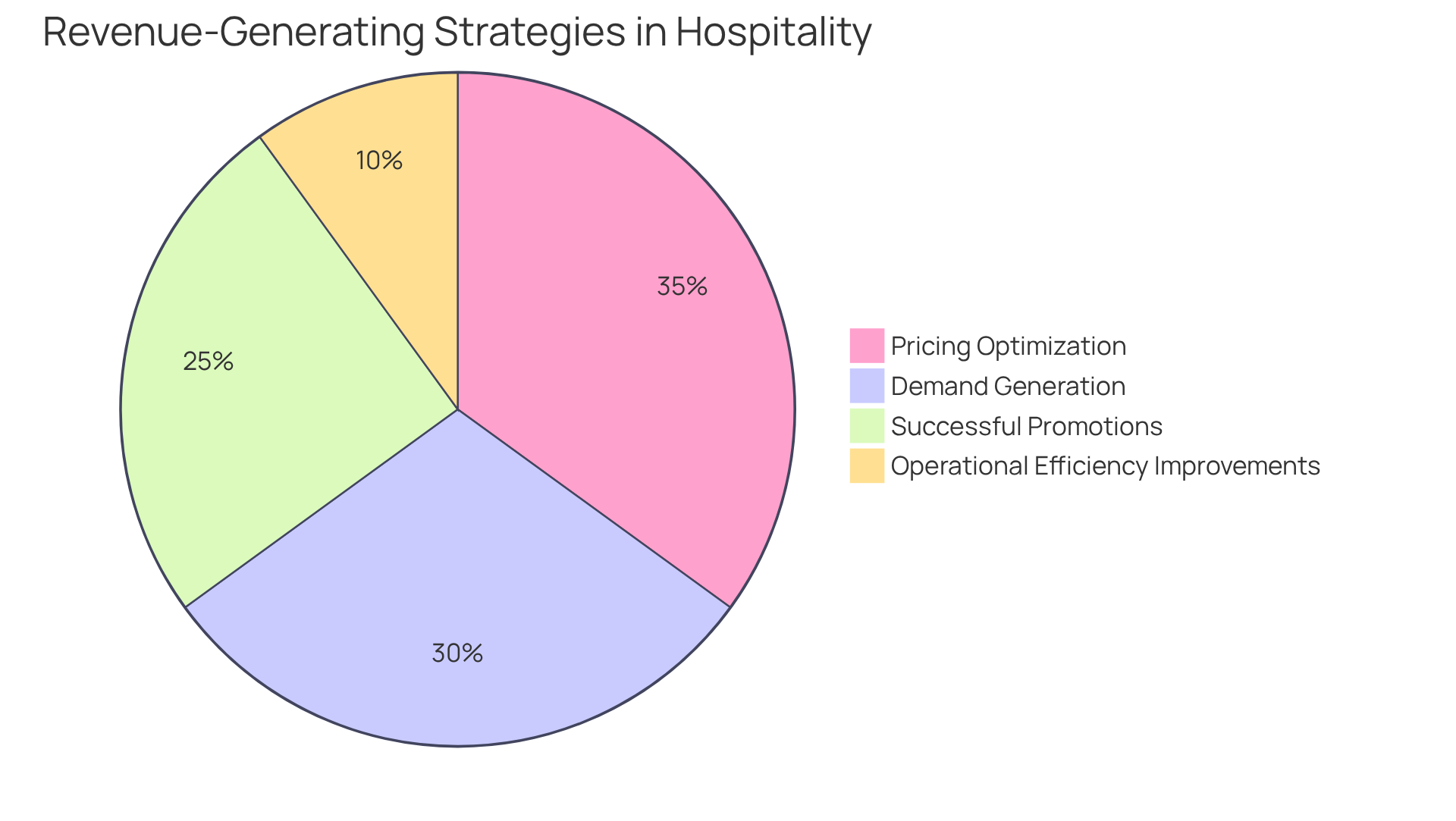
Conducting a year-over-year analysis of profit and loss statements is essential for accommodations seeking to gain insights into their financial performance. By identifying variances, hotels can uncover the underlying reasons for income fluctuations and cost increases. This clarity not only facilitates informed decision-making regarding hotel budgets but also lays the groundwork for strategic planning aimed at future growth.
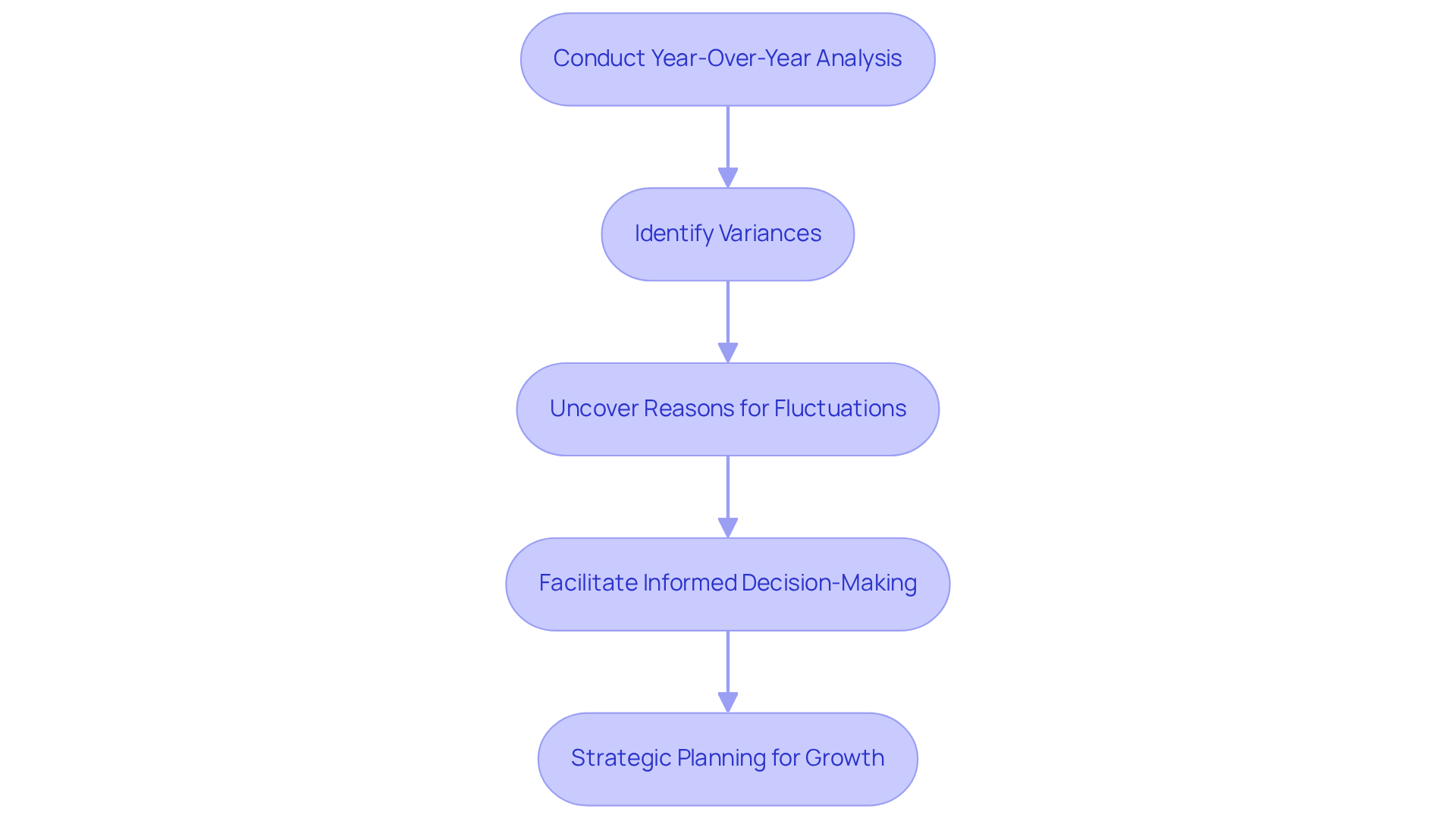
Monitoring staff labor productivity is crucial for aligning labor costs with revenue generation in the hospitality sector. By analyzing performance metrics, establishments can identify high-performing employees while also uncovering areas for enhancement. This data-driven approach enables informed decisions regarding staffing levels and targeted training initiatives.
Furthermore, building strong relationships with employees fosters engagement, which is vital for enhancing guest satisfaction. Consequently, costs are effectively controlled, and service delivery is elevated through improved employee morale.
Implementing successful cost control strategies through staff performance analysis, along with regular performance reviews and feedback sessions, cultivates a more efficient workforce, ultimately contributing to the establishment's overall profitability.
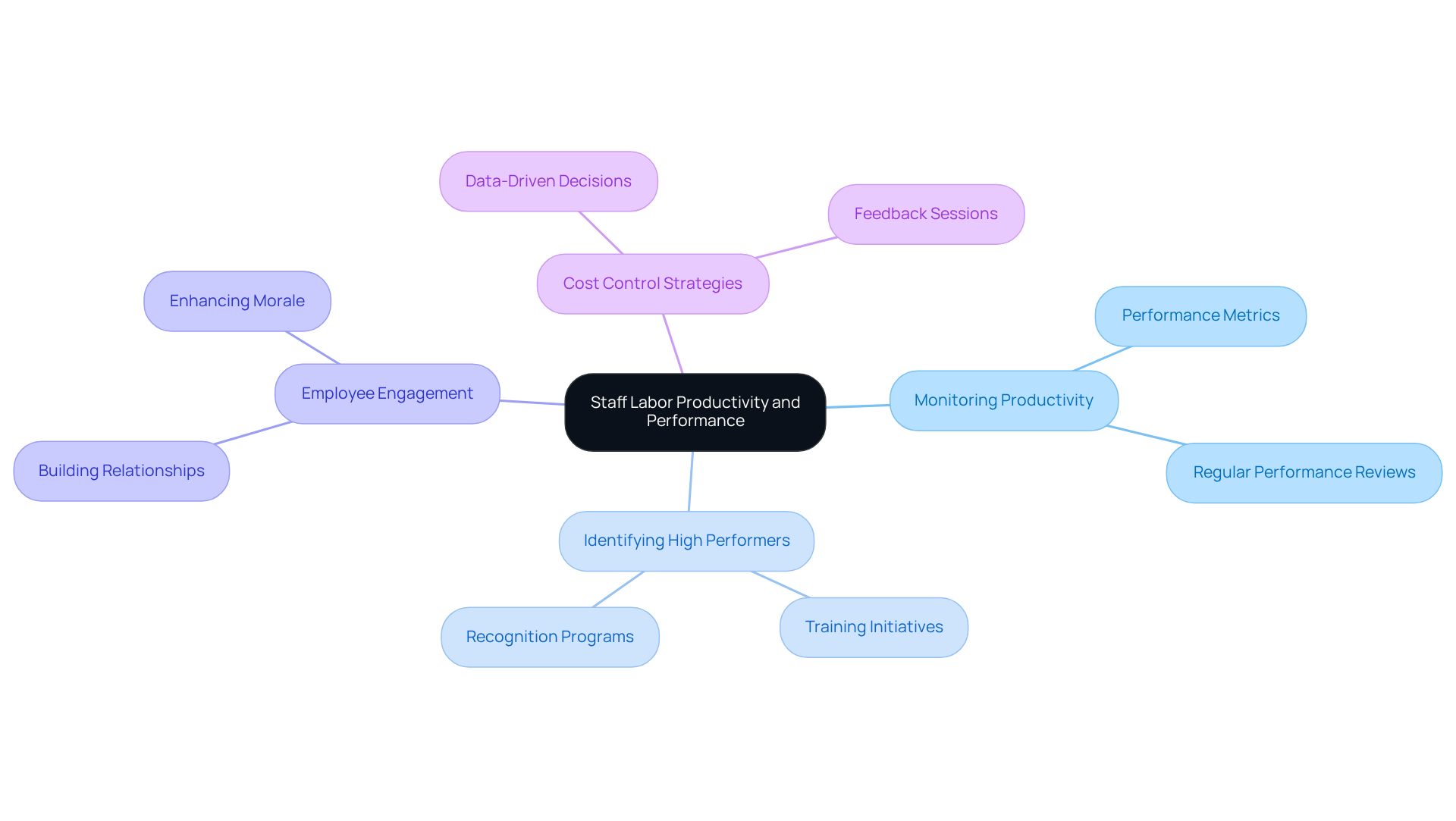
Creating a yearly staffing guide is essential for aligning labor expenses with hotel budgets. This guide must rely on a thorough examination of historical data and anticipated demand, enabling accommodations to predict staffing requirements with precision. It should detail the necessary number of staff for each department, taking into account peak seasons and special events that may impact occupancy rates.
For instance, accommodations typically adjust staffing levels based on occupancy predictions, which can vary significantly; a 62.9% occupancy rate is projected for U.S. establishments in 2025, according to PwC. By strategically aligning labor expenses with hotel budgets, accommodations can ensure they maintain adequate staffing to meet guest expectations while avoiding overspending.
This proactive approach not only enhances operational efficiency but also contributes to improved guest satisfaction and overall profitability. As J. Willard Marriott once stated, "Great companies are built by people who never stop thinking about ways to improve the business." This mindset is vital in developing effective staffing strategies.
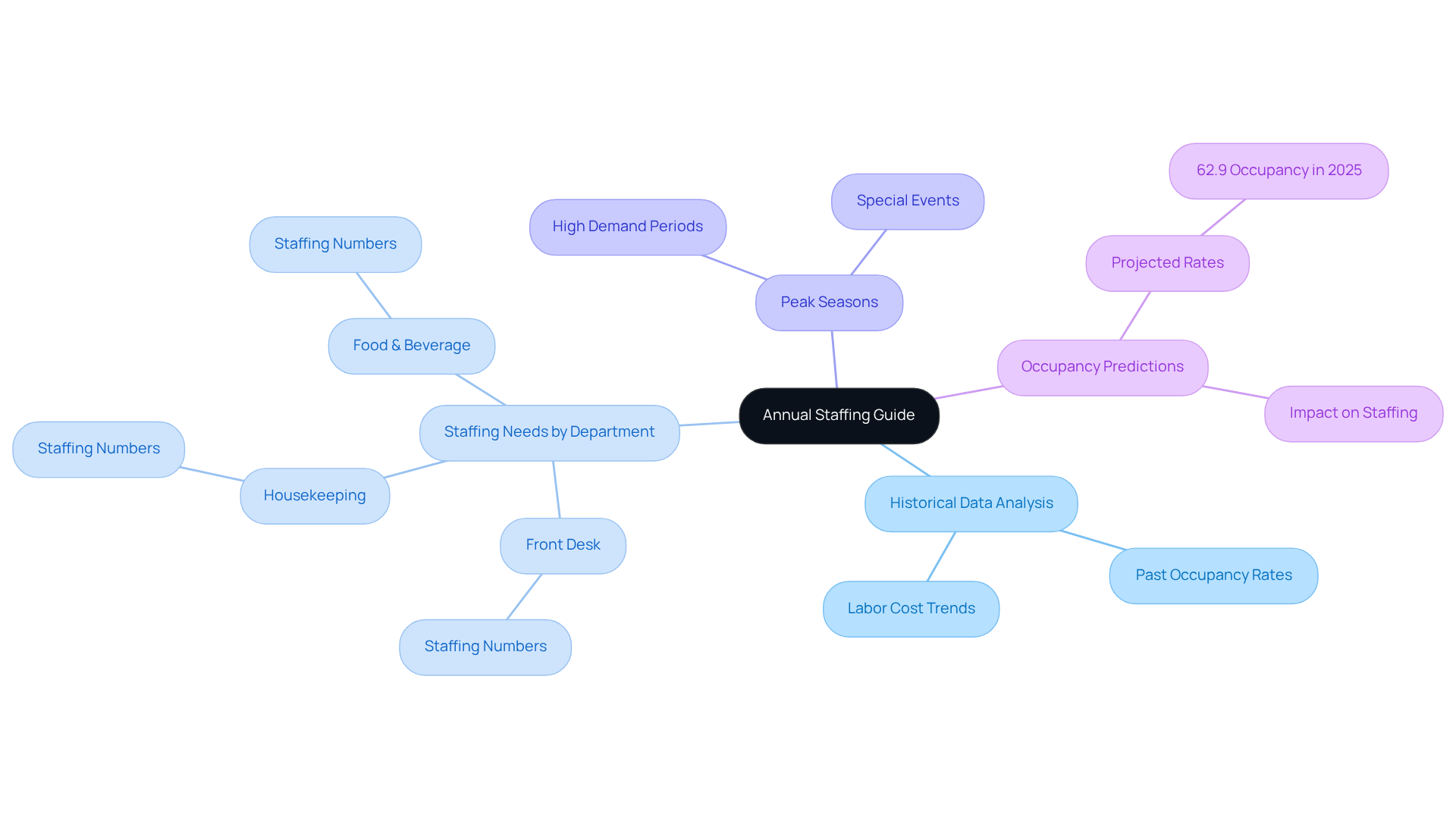
Utilizing digital technology, including automated check-in systems and AI-driven customer service tools, significantly simplifies operations in accommodations while reducing staffing needs. By automating routine tasks, accommodations can redirect their workforce towards higher-value guest interactions, thus enhancing the overall guest experience. This approach not only improves service quality but also effectively controls labor costs.
For instance, accommodations that have adopted automation report substantial decreases in labor costs, enabling more effective resource distribution. In fact, Lights On has achieved an average year-over-year income growth of 47% while managing over 50 businesses, demonstrating the potential of automation to drive profitability.
As industry leaders emphasize, embracing automation is not merely a cost-cutting measure; it is a strategic move towards operational excellence and improved guest satisfaction. As Haresh Sippy noted, 'Automation is cost cutting by tightening the corners and not cutting them.'
Furthermore, the success of Wailea, which surpassed revenue expectations after applying Lights On's customized strategies, serves as an intriguing case study that illustrates the concrete advantages of incorporating automation into lodging operations.
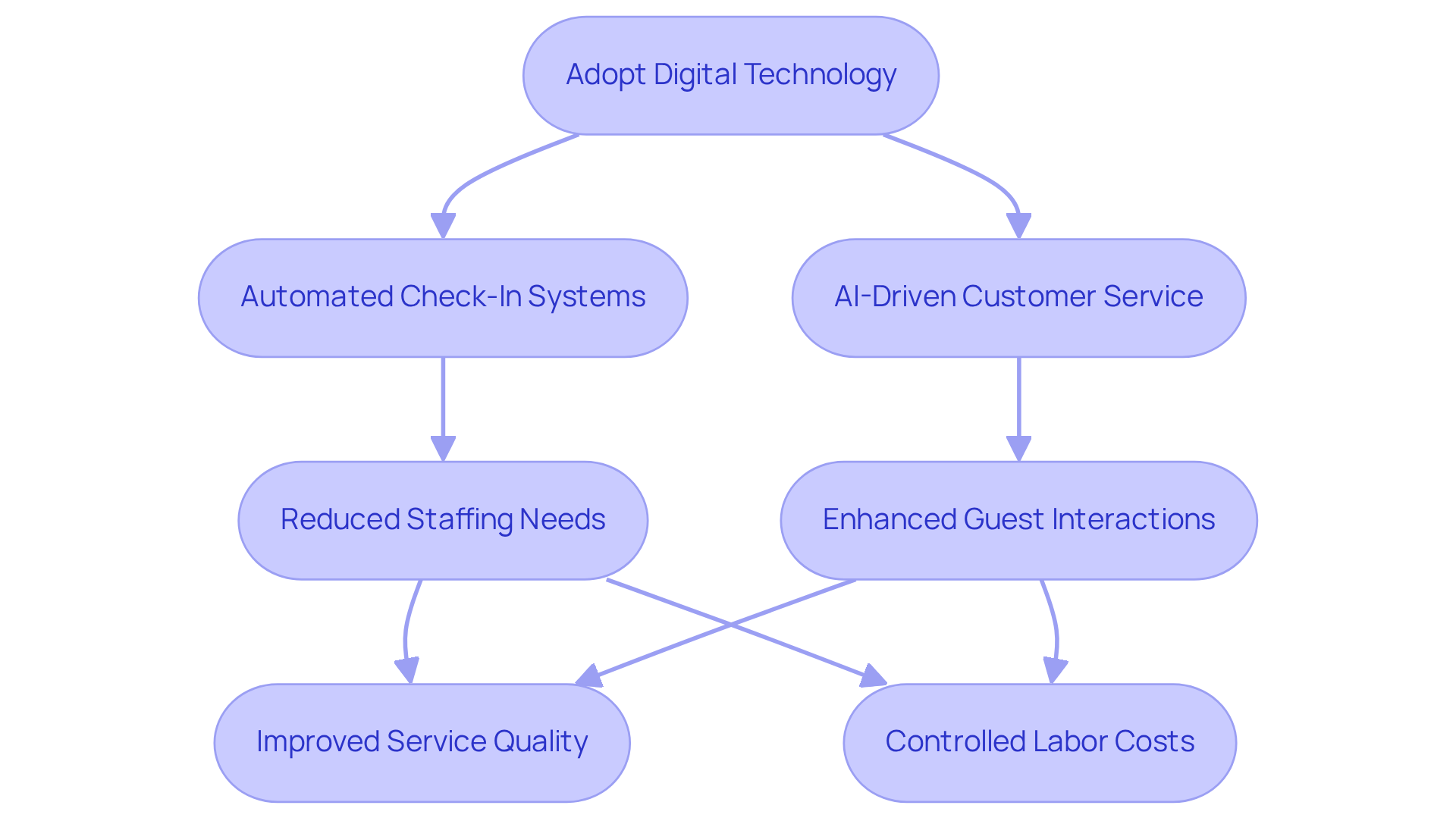
Budgeting for staff incentives, such as bonuses or recognition programs, is not merely an expense; it is a strategic investment that significantly enhances employee motivation and performance. By fostering a culture of appreciation, establishments can elevate employee morale and reduce turnover rates. This, in turn, leads to improved service for guests, creating a ripple effect that benefits the entire organization. Ultimately, this investment in human capital translates to higher guest satisfaction and loyalty, making it a vital consideration for any hospitality business aiming for success.
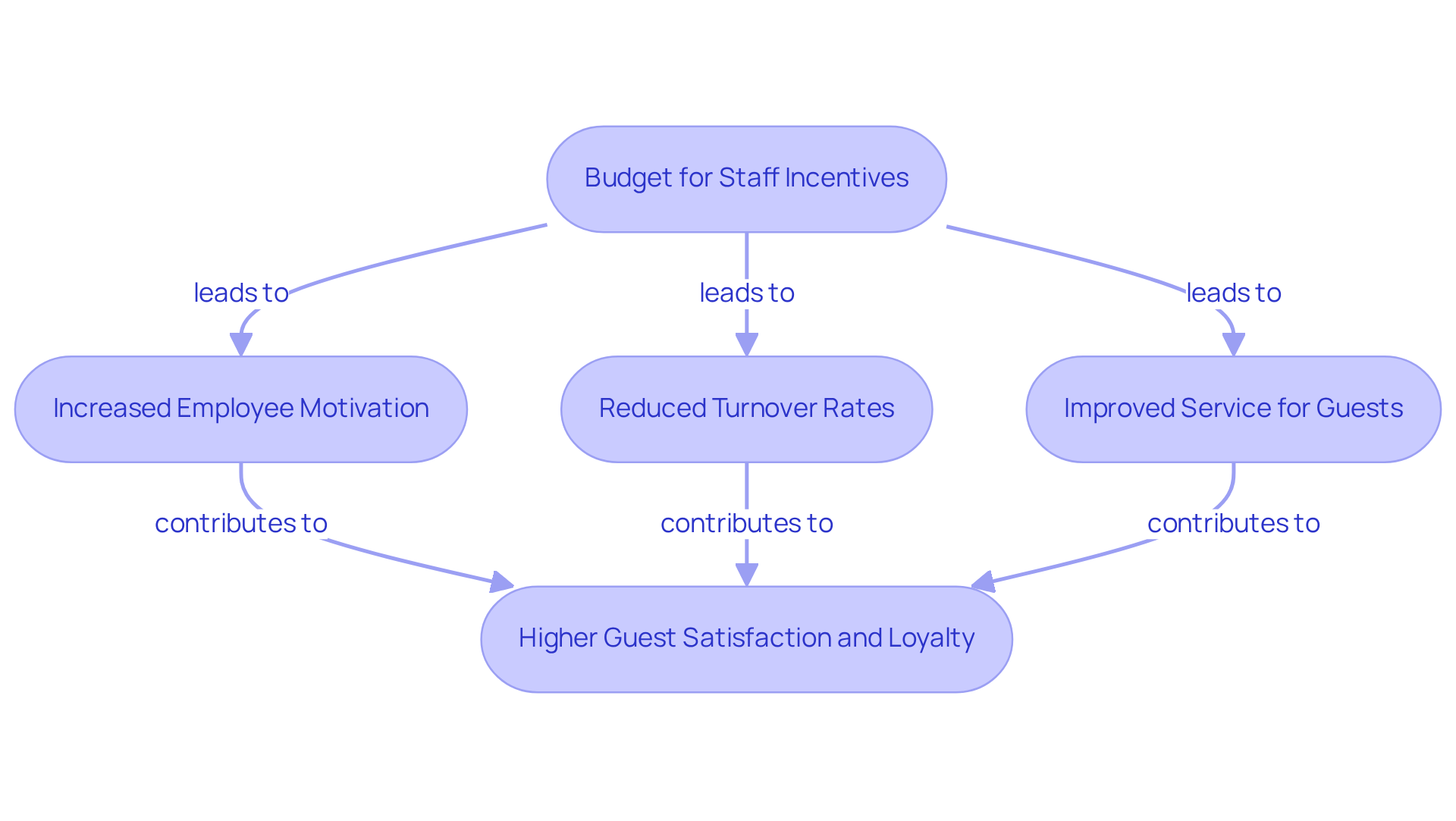
When planning budgets, accommodations must allocate funds for potential repairs and renovations. This proactive strategy is essential in preventing unexpected expenses and ensuring that the property remains in optimal condition. Furthermore, regular maintenance and timely renovations not only enhance guest experiences but also safeguard the establishment's long-term investment value. By recognizing the significance of these practices, hotel and restaurant owners can effectively mitigate risks and capitalize on their assets.
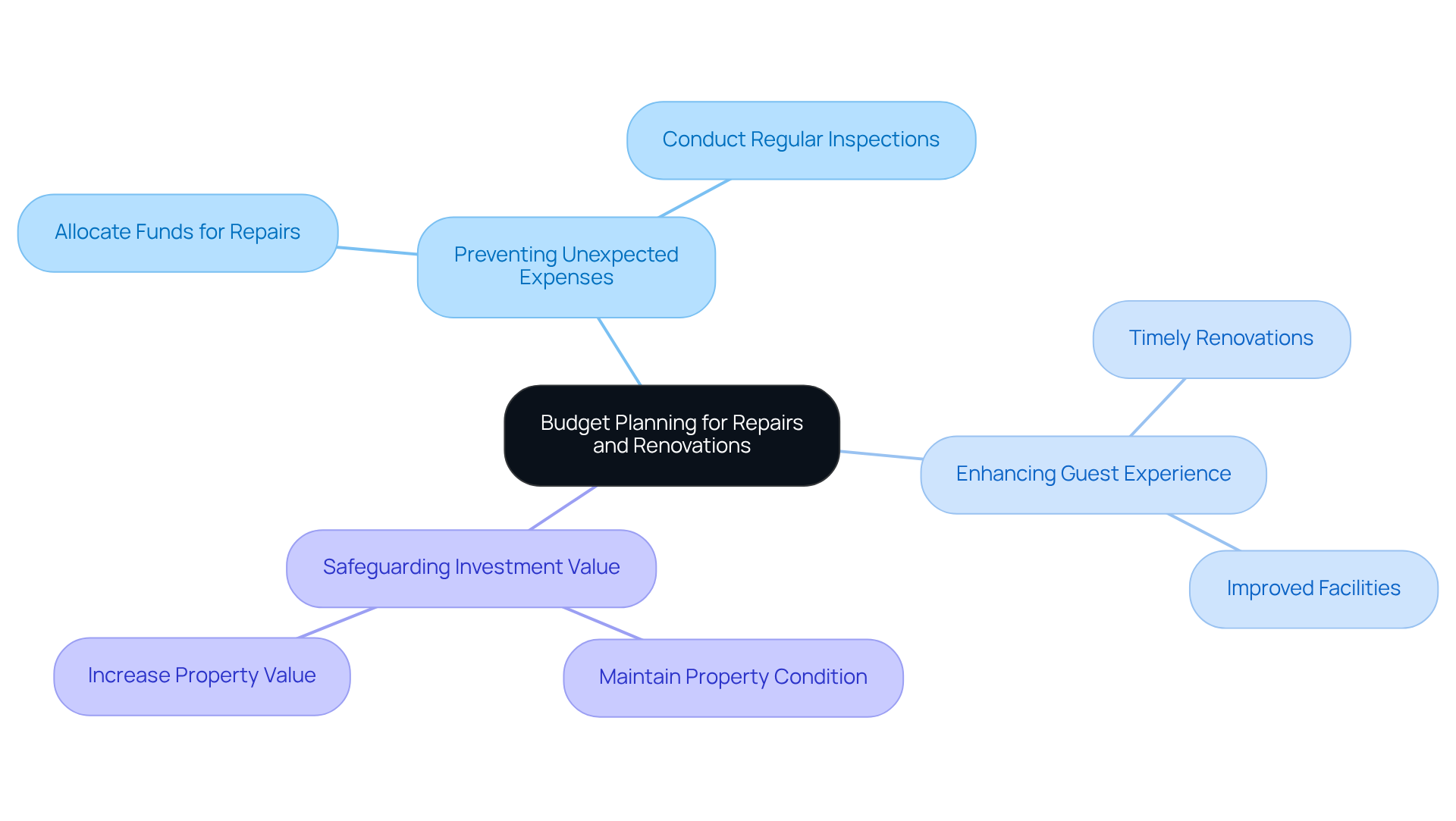
Examining the group backlog is essential for understanding the potential impact of upcoming group bookings on future income. By analyzing trends in group demand, accommodations can strategically tailor their marketing efforts to attract more group business. This proactive forecasting method not only optimizes revenue from group reservations but also allows for flexibility in overall sales strategies. Efficient income management requires accommodations to assess how group reservations might replace higher-rated transient clientele, ensuring that hotel budgets reflect the balance between group and individual guest earnings is maximized.
To enhance group bookings while staying within hotel budgets, establishments can implement targeted marketing campaigns during peak group demand periods, offer customized packages for group events, and leverage social media to connect with potential group clients. Furthermore, citywide events can significantly influence group demand, enabling accommodations to capitalize on increased occupancy and revenue opportunities during major conventions. For instance, establishments that effectively employ group demand management strategies can elevate their overall profitability by thoughtfully evaluating the impact of group reservations on room nights, food and beverage sales, and meeting space rentals.
As Mark Lynn notes, "The use of technology alone is a short-sighted approach. There are always unique circumstances occurring in a lodging's competitive environment that may not show up in the numbers." Therefore, leveraging data-driven insights from historical trends and current market conditions, alongside advanced revenue management systems, becomes crucial for making informed decisions that drive financial success. Moreover, encouraging direct reservations through accommodation websites can enhance profitability by reducing commission fees to external entities, aligning with the overarching theme of optimizing financial strategies.
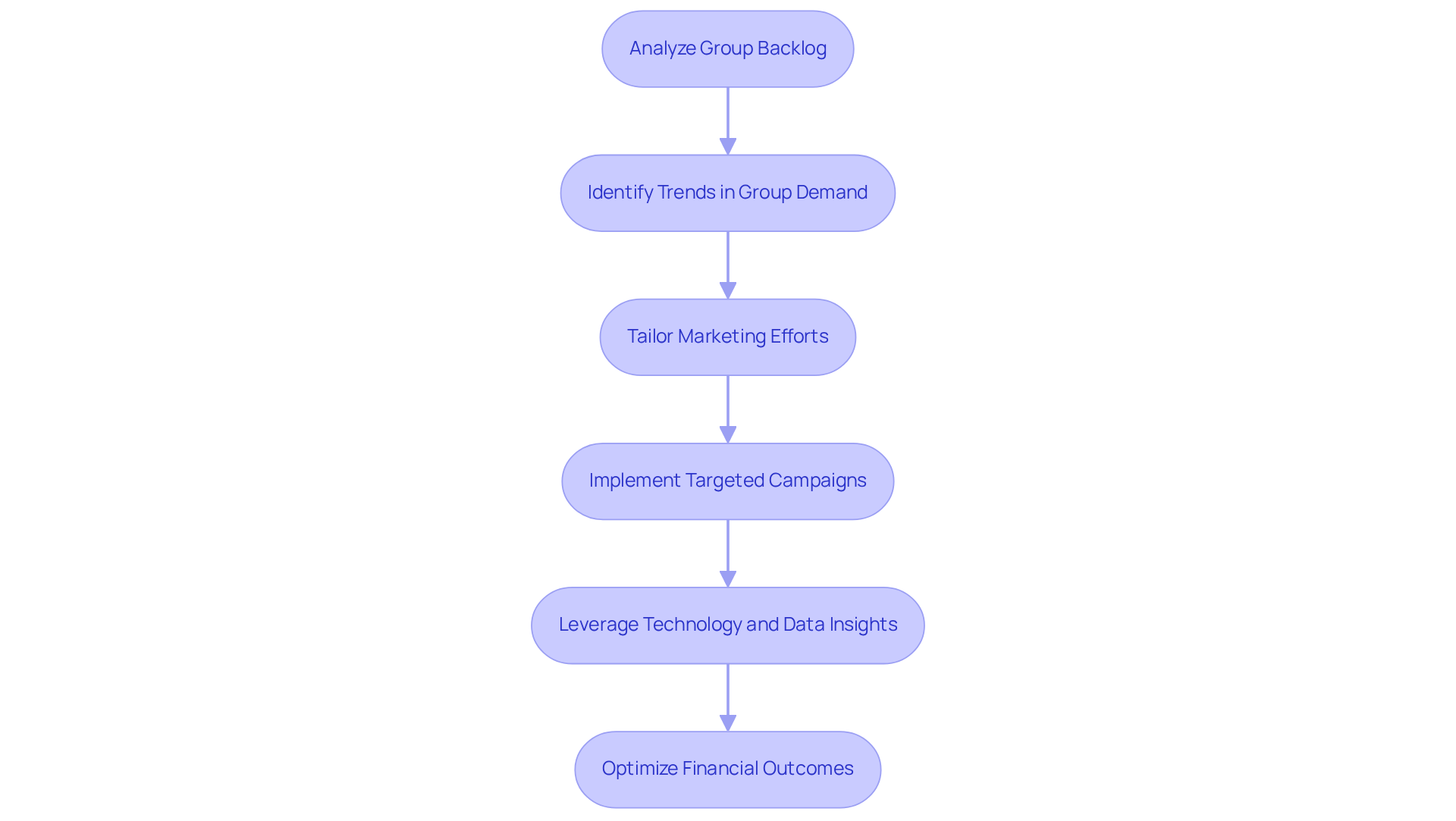
Consistently assessing anticipated operating cash flow is crucial for establishments to evaluate their financial condition and implement informed budget modifications. This practice enables establishments to monitor cash inflows and outflows, ensuring they maintain sufficient liquidity to cover operational expenses and capitalize on growth opportunities.
For instance, successful cash flow forecasting strategies, as illustrated in the case study "Cash Flow Forecasting: Planning for Financial Health," demonstrate how proactive management can lead to improved financial stability. In 2025, statistics indicate that establishments with robust operating cash flow management are better positioned to navigate economic fluctuations, with many achieving a cash flow margin of 0.26—generating 26 cents of cash for every dollar of sales.
As one specialist remarked, "Cash flow analysis assists property owners and managers in assessing the financial well-being of their enterprise, strategizing for future investments, and enhancing their operations." By prioritizing cash flow analysis, establishments can enhance their financial resilience and strategically plan for future investments, ultimately fostering long-term profitability.
To implement effective cash flow management, property owners should regularly review their cash flow statements to identify trends and adjust their budgets accordingly.
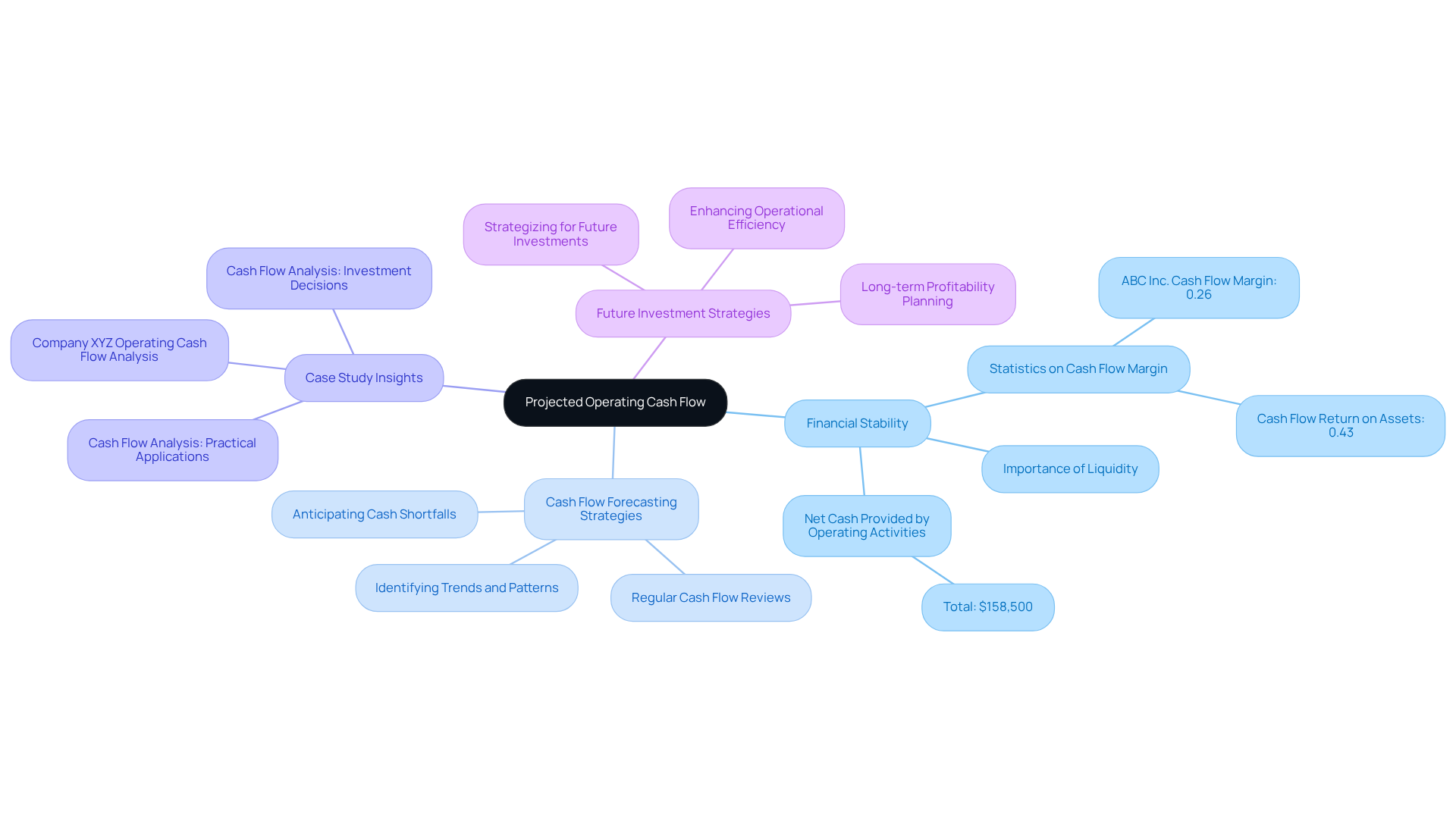
Subscribing to STR (Smith Travel Research) reports equips establishments with essential market insights—occupancy rates, average daily rates, and revenue per available room. This data is crucial for benchmarking performance against competitors and understanding market trends. For instance, the lodging sector anticipates an increase in the average daily rate in 2025; thus, it is imperative for establishments to stay informed. By leveraging these insights, accommodations can make strategic decisions about hotel budgets, pricing, marketing, and financial allocation.
To enhance marketing strategies, property owners should consider implementing targeted promotions during peak occupancy periods identified in STR reports or adjusting pricing strategies based on prevailing market trends. These actions not only foster improved financial performance but also strengthen competitive positioning. Ultimately, the ability to adapt and respond to market data will empower establishments to thrive in an evolving hospitality landscape.
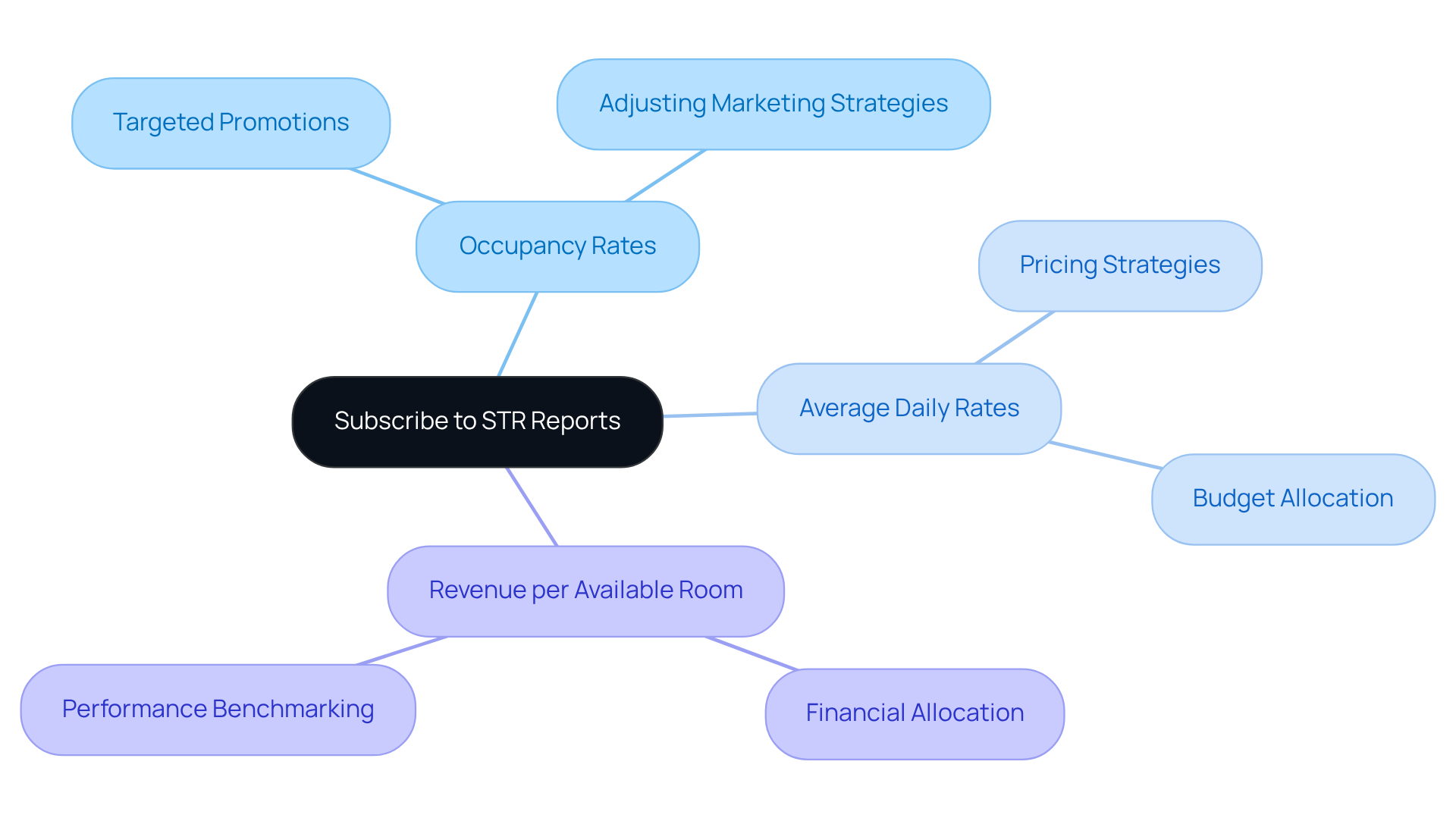
Examining past data is crucial for establishments aiming to bolster their finances and enhance profitability. By analyzing historical performance, accommodations can uncover patterns in costs and income, which will help in establishing accurate hotel budgets and providing a solid foundation for future predictions. This data-driven strategy empowers accommodations to establish realistic hotel budgets, ensuring that their financial plans closely align with actual performance. Consequently, this minimizes the risk of financial shortfalls and enables hotel managers to make informed decisions regarding hotel budgets and resource allocation.
Effective expense forecasting strategies, underpinned by historical data, not only improve operational efficiency but also contribute significantly to the overall financial health of the establishment. Furthermore, budget forecasting is a dynamic process that necessitates continuous monitoring and adaptation based on actual performance. Involving department leaders in the budgeting process fosters accountability and ensures that all facets of operations are considered, ultimately leading to more accurate forecasts.
As stated, 'Budget forecasting is essential for managing the financial health and stability of an organization,' which underscores its vital role in the success of hotel budgets.
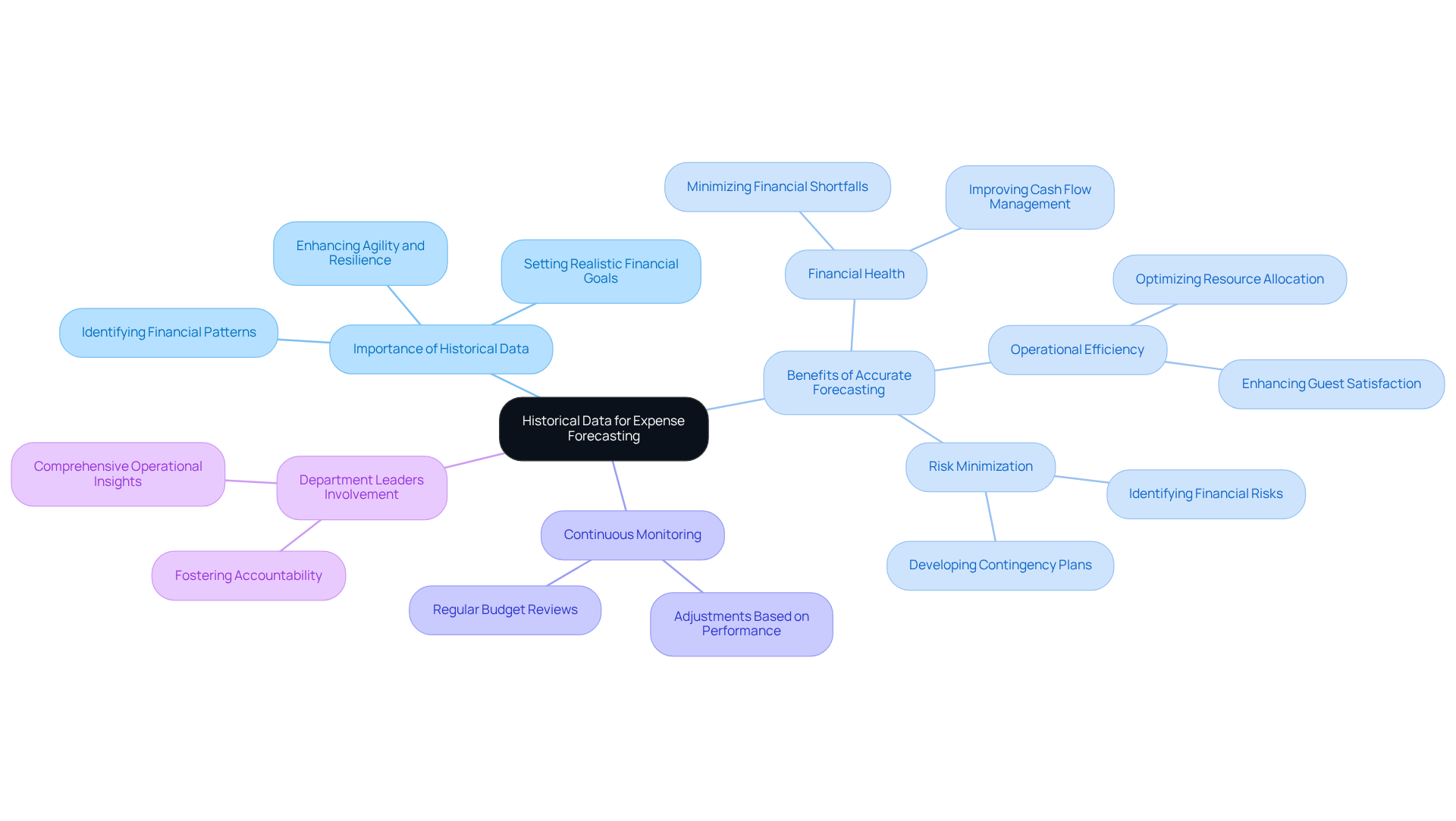
Evaluating the impact of global events—such as economic downturns or pandemics—is crucial for effective budget planning. Hotels must consider how these events influence travel demand, occupancy rates, and total income. For instance, while room rates have been increasing month over month, they are not keeping pace with inflation, indicating a challenging environment for revenue management. In fact, STR and Tourism Economics predict a 2.0% year-over-year increase in U.S. lodging demand for 2024-2025, demonstrating the resilience of the sector amidst economic challenges.
To navigate these uncertainties, accommodations should incorporate potential disruptions into their hotel budgets while also utilizing effective promotional approaches. For example, modifying pricing strategies and executing targeted marketing efforts during economic recessions can aid in maintaining operations and preserving customer loyalty. Successful case studies illustrate that establishments with proactive approaches can mitigate the negative impacts of global occurrences. Properties that adjusted their marketing and pricing strategies during the COVID-19 pandemic were able to sustain operations and maintain customer loyalty, showcasing the tangible benefits of adaptability.
Ultimately, comprehending the broader economic environment and preparing for potential obstacles can enable establishments to enhance their finances and increase profitability, even in the face of global uncertainties. As Bianca Lüthy noted, the hospitality industry is evolving rapidly, driven by automation and shifting guest expectations, which further emphasizes the need for effective budgeting strategies.
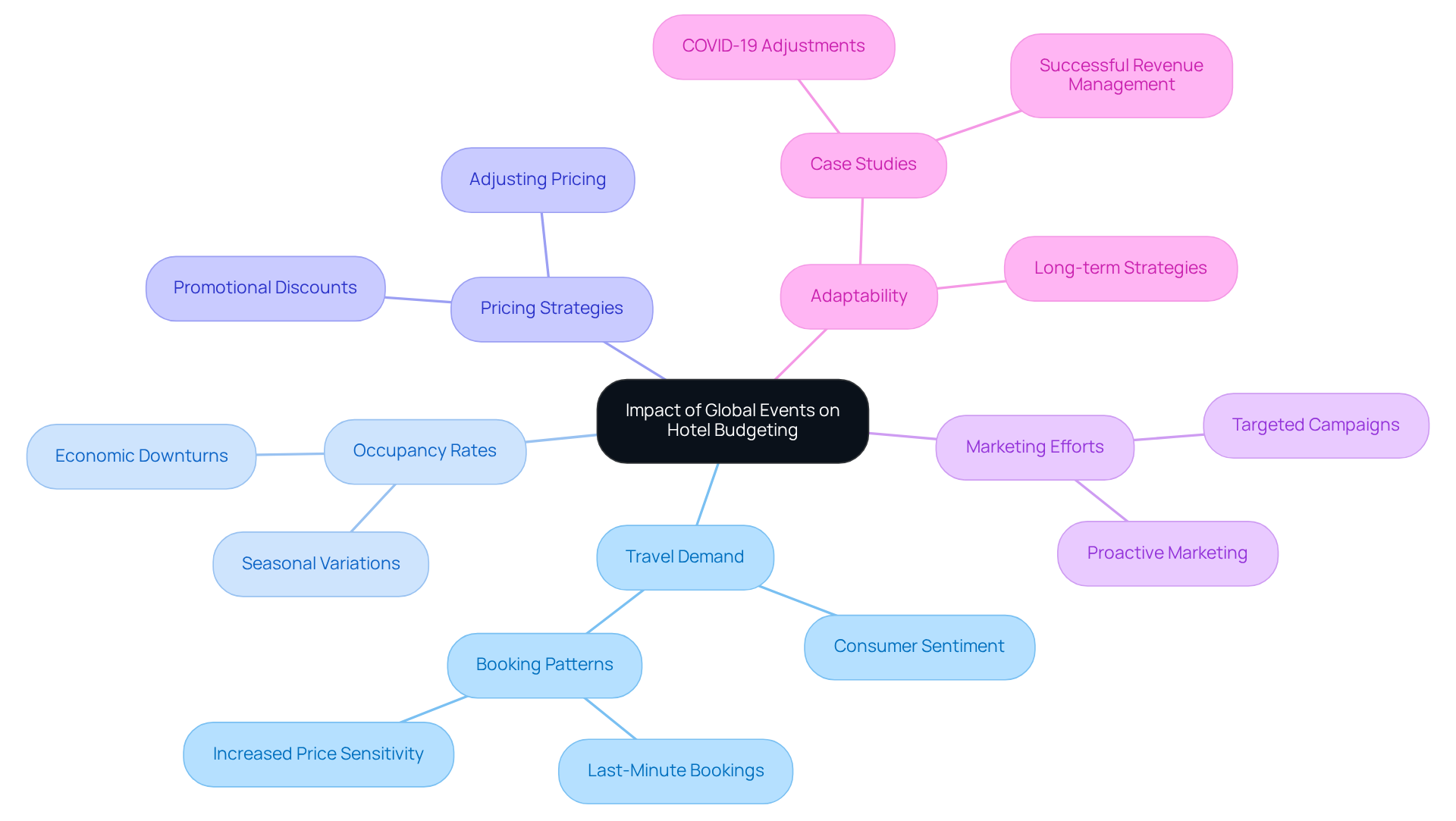
Maintain Flexibility in Your Budget to Adapt to Market Changes
A flexible budget is crucial for hotels aiming to thrive amidst fluctuating market conditions. By integrating reserve funds and conducting regular assessments of financial distributions, establishments can swiftly respond to shifts in demand, unexpected expenses, or new opportunities. This adaptability is not just beneficial; it is essential for sustaining profitability and ensuring long-term success in the hospitality industry.
Furthermore, implementing targeted marketing strategies, such as seasonal promotions or loyalty programs, can significantly enhance revenue management. By aligning marketing initiatives with hotel budgets, hotels can optimize their financial performance and effectively navigate market dynamics.
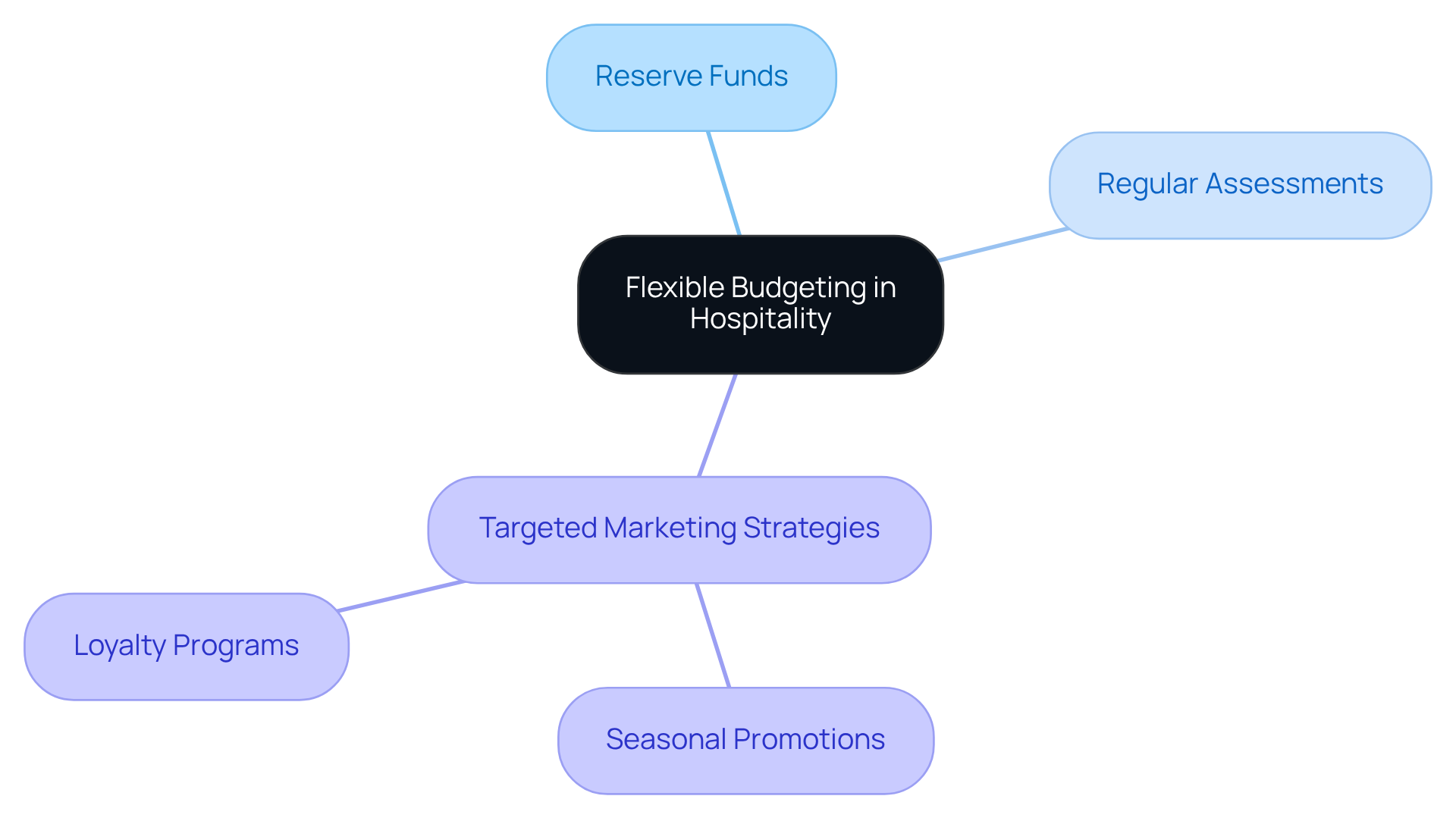
Harnessing data-driven insights and strategic budgeting techniques is essential for hotels aiming to maximize profitability. By implementing the strategies outlined, accommodations can refine their financial practices and position themselves favorably within a competitive market. The integration of analytics into budgeting processes facilitates proactive decision-making that aligns with evolving guest preferences and market conditions.
Key strategies discussed include:
Establishments that prioritize staff performance and invest in technology can significantly reduce labor costs while enhancing guest satisfaction. Furthermore, understanding the impact of global events and adapting marketing strategies accordingly can safeguard against financial uncertainties.
Ultimately, the ability to adapt and respond to market changes is paramount for sustained success in the hospitality industry. By embracing these strategies, hotels can enhance their financial health and create memorable guest experiences that foster loyalty and drive long-term profitability. The journey towards optimizing hotel budgets transcends mere numbers; it encompasses fostering a culture of continuous improvement and responsiveness to the dynamic landscape of hospitality.
How can data analytics optimize hotel budgets?
Data analytics helps hotels identify trends, forecast demand, and make informed decisions on resource allocation, allowing them to anticipate occupancy shifts and refine financial strategies, ultimately boosting profitability.
What are some tactics hotels can adopt for data-informed budgeting?
Hotels can implement dynamic pricing based on real-time demand data and launch targeted marketing campaigns that focus on peak demand periods.
What impact do data-driven insights have on revenue expectations?
Data-driven insights enable hotels to surpass revenue expectations by optimizing pricing strategies and enhancing operational efficiency, as demonstrated by successful collaborations like that with Lights On.
Why is monitoring demand trends important for hotels?
Monitoring demand trends allows hotels to analyze historical data to identify patterns in bookings and occupancy rates, enabling them to adjust pricing and marketing efforts strategically during peak and slow periods.
What recent trends have been observed in group and business travel?
The first quarter of 2025 showed significant growth in group and business travel across the U.S., presenting opportunities for accommodations to enhance their services during busy periods.
How can hotels identify growth opportunities through financial analysis?
By consistently evaluating year-to-date earnings against prior years, hotels can identify which services or promotions are driving revenue and which may need reassessment, thus uncovering growth opportunities.
What examples illustrate the effectiveness of analyzing year-to-date revenue?
Establishments like Veda5 Wellness Retreat and Olive Living have successfully implemented strategies that led to profit increases of 50% and 2X, respectively, by focusing on high-performing sectors.
Why is it important to conduct a year-over-year analysis of profit and loss statements?
Year-over-year analysis helps hotels understand their financial performance by identifying variances, which uncovers reasons for income fluctuations and cost increases, facilitating informed decision-making for future growth.
Transform your group booking strategies with Lights On and watch your occupancy soar.